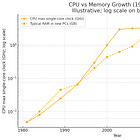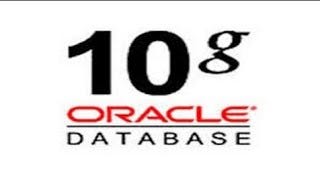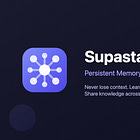I Joined Oracle to Fix Your AI's Memory Problems (And Yes, That's a Real Thing)
Or: How I Learned to Stop Worrying and Love the 95% Failure Rate
Friends, Romans, LinkedIn connections who I met once at a conference in 2019,
I have news. After months of cryptic posts about "exciting things ahead" and "can't wait to share what's next" (sorry, I know how annoying those are), I can finally tell you:
I've joined Oracle as Senior Director of Generative AI Customer Engagement, working on an OCI Big Data service.

Now, before you close this tab thinking "oh great, another corporate announcement disguised as thought leadership," hear me out.
Because I'm about to tell you why 95% of enterprise AI projects are failing, why your chatbot has the memory of a goldfish with amnesia, and why I chose to tackle these problems at a company that many of you probably associate more with a particular person’s yacht collection than AI models.

The Uncomfortable Truth About Enterprise AI
If you follow my blog, you know I love to paint pictures. You know that fancy AI agent your company deployed last quarter? The one that was supposed to revolutionize customer service/DevOps/sales/[insert your department here]?
There's a 95% chance it's currently sitting in a corner, crying into its context window, overwhelmed by the complexity of actually doing its job - kind of like Towelie after he smoked a doobie on the Tegridy farm.
MIT and Fortune aren't making these numbers up for clicks. I love the Kumare, Kumare chortling prophet posts that the 95% metric is clickbait.
It isn’t.
Here's what nobody tells you at those slick AI demos: Models have terrible memories. They are worse at finding information.
They're like that friend who swears they remember your birthday but always texts you three days late.
They exhibit what we call a "U-shaped attention curve" - they remember the beginning of a conversation ("Hello!") and the end ("...so can you help?"), but everything in the middle?
Gone. Vanished. Lost in the token void.
The Healthcare Story That Changed Everything
While I was building my startup, I met an extensive midwestern healthcare system. They were aggressively piloting and trying to use AI. They wanted AI to monitor patient vitals - seems simple enough, right? Wrong.
Their first attempt was like trying to keep track of a kindergarten class during recess with one perplexed substitute teacher. The AI couldn't remember which patient was which. It was attempting to act asynchronously as an agent across multiple patient workflows.
It was mixing up contexts faster than a DJ at a wedding who's had too much champagne.
They had to create separate context windows for each patient, with a steering model just to manage the chaos.
Even then, the memory continued to dilute over time, much like trying to make soup by continuously adding water. Not great when you're dealing with, you know, actual human lives.
The solution? They built a structured memory system that could slice information by topic, time, and relationships - essentially giving the AI a proper filing cabinet instead of a pile of sticky notes scattered on the floor.
But they also have the R&D budget of many rural hospitals. And the patience to work with new technology. Two characteristics that most enterprises lack have created a new fear of an AI bubble. That is the Oracle opportunity.
Why Oracle? (No, Really, Why Oracle?)
I know what you're thinking.
"Oracle? The database company? The one with the aggressive sales team and the complex licensing models?"
Yes, that Oracle. And here's why that's exactly where the AI revolution needs to happen:
1. They Have All The Data. Oracle's Fusion Applications run the critical operations for most Fortune 500 companies. We're talking about the data that actually matters - not your social media likes or what you had for breakfast, but the stuff that keeps the global economy running. If you want AI to work in the enterprise, you need to be where the enterprise data lives.
2. Infrastructure That Actually Works. While everyone else is fighting over GPU allocation and wondering why their models keep timing out, Oracle has quietly built one of the most robust cloud infrastructures on the planet. Turns out, when you've been handling enterprise workloads for decades, you know a thing or two about scale.
3. The Boring Stuff Is Where The Magic Happens. Everyone wants to build the next ChatGPT. But what enterprises actually need is meat and potatoes.
a) AI that can not only remember what happened in a customer conversation three months ago, but can fully understand the context and relationships, and enrich the conversation with recent, trusted facts in a secure way.
b) AI that can handle context switching without having an existential crisis.
c) AI that doesn't hallucinate regulatory compliance requirements (because that's how you end up in court).
The Vision: AI That Doesn't Suck at Its Job
While the prophets chase AGI and believe “it’s all in the model,” I tend to be a bit more practical about the state of the industry.
The data and memory tooling for AI must keep pace with the models.
Especially since we are all concerned that the industry has entered a state of incremental improvement rather than achieving remarkable breakthroughs.
We need to start talking about the mythical unicorn called AGI and start talking about ROI.
Here's where I see large data platforms evolving towards: Intelligent platforms that can process petabytes of big data while actually solving the AI memory problem. Imagine agents that can maintain context across weeks or months, not just minutes. Agents that can be invoked on schedule to check security logs without forgetting what a security breach looks like halfway through. Agents that can handle asynchronous tasks without losing their minds (or their context).
Imagine a "context cube" - a multidimensional memory store that slices information by topics, time, and relationships.
When an AI needs to remember something, it doesn't have to frantically search through conversation history like you looking for your keys. It does not have to piece together “context” from a chat transcript written by a millennial. It gets a structured summary, complete with all the relevant context, ready to go.
The Plot Twist
After spending months consulting enterprises to fix their broken AI implementations (including building Camille and Supastate for Claude Code (I crossed 700 users this week, thank you!) and now Gemini, because even I need my coding agent to remember what project we're working on), I realized something.
The problem isn't that AI isn't smart enough. It's that we're terrible at helping it remember things.
It's like giving Einstein a brilliant problem to solve but making him start over every five minutes. It's no wonder that 95% of projects fail. We also don’t fully understand the intelligence-latecy paradox of using multiple agents, especially in ad-hoc context, which I demonstrated with Project Hawking Edison.
I think my jaw dropped when I saw a panel orchestrate a roadmap planning session for my wife’s company’s leadership team. But I also had to code a ton to support this: a shared context store, a hallucination and echo chamber detection algorithm, an asynchronous monitoring mechanism, and a data warehouse with vector search for knowledge.
This work is out of the reach of most enterprise customers trying to make it work at scale.
So What Now?
I'm joining Oracle to build a practical future for enterprise AI. Not an agentic nirvana where every employee is replaced with a chatbot that forgets after 250K tokens. Not because it's easy (it's not), not because it's sexy (enterprise information architecture and data warehousing rarely is), but because it's necessary.
Someone needs to build the boring, yet critical, infrastructure that makes AI truly valuable for the enterprise. Someone needs to solve the memory problem, the context problem, and the "why-does-my-AI-agent-keep-forgetting-what-company-it-works-for" problem.
And apparently, that is now a team that includes me, sitting in Oracle's analytics division, getting genuinely excited about token optimization and context window management.
All jokes aside, I am absolutely thrilled about this new opportunity.
The Call to Action (Because Every Substack Needs One)
If you're part of the 95% struggling with AI implementation, let's talk.
If you're in the 5% who succeeded, let's definitely talk (and please share your secrets).
If you're just here for the jokes about enterprise software, welcome; there will be many more.
The enterprise AI revolution won't be built on prophets, valuations, demos, and POCs.
It'll be built on solving the unglamorous problems that actually matter.
Like teaching AI to remember things. Revolutionary, I know.
Welcome to my Oracle era. It's going to be wonderfully boring in all the right ways.
And I would like to thank the Oracle team for tolerating me!
P.S. - To my former clients who are reading this: Yes, your AI agents will still remember me. I made sure of that. Context windows are forever.
P.P.S. - To my over 700 loyal Supastate users, yes, I’ll continue to operate it for you!









